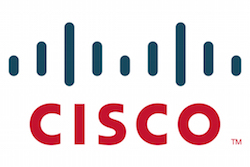Cisco has introduced a small cell solution aimed at large-scale deployments, while announcing a partnership with Telstra to deploy “on-demand” virtualised cloud services.
The company also launched an all-IP mobile broadband solution for enterprises labelled “LTE in a box”.
Cisco said its Universal Small Cell 8000 series has been designed for easy integration into enterprises, with SON support for up to 100 3G or LTE access points to ensure coverage in large buildings.
It also features both mobile and virtualised packet cores to provide “massive scale” and a common platform for both cellular and unlicensed mobile connections, Cisco said.
The company claimed the solution had been developed to provide “a more scalable and integrated approach to enterprise small cells.” It is the result of a collaboration with SpiderCloud Wireless, who will create custom small cell technology for Cisco.
Vodafone will be the first service provider to deliver the USC 8000 to its enterprise customers.
Matt Beal, the operator’s Director of Innovation and Architecture, said: “Working with Cisco and SpiderCloud, we will be able to offer our enterprise customers a highly flexible small cell system that can be deployed rapidly and cost-effectively to enhance the quality of the mobile and Wi-Fi coverage our customers rely on to run their businesses.”
Cisco also revealed it was working with Australian operator Telstra to deliver virtualised network and cloud services to business customers.
The companies will work towards providing a suite of virtualised, ready-to-use services based on an open architecture that will be available on demand via a self-service portal, Cisco said.
The open architecture will be built on Cisco’s Evolved Services Platform (ESP), with the aim of streamlining the product and customer experience across cloud, network and value-added services.
Kate McKenzie, COO of Telstra, said: “In a nutshell, we want to transform our network services so they become instantaneous – purchased and provisioned in the same manner as cloud.
“With Cisco, we will create a world-leading open network platform and software defined experience so customers can bring together the benefits of cloud and managed network services all through a single, self-service platform, with drag and drop functionality.”
Meanwhile, in the United States, it was revealed that AT&T will use Cisco’s virtualisation technology for its connected car services.
Cisco said the use of its virtual mobile network solution would enable the US operator to lower entry costs and leverage “flexible” connected car deployment models, by providing connectivity driven by software rather than hardware.
Cameron Coursey, VP of Product Development and Operations at AT&T’s Internet of Things unit, said: “With this new software-driven mobile Internet solution incorporated into our offerings, we can help to provide auto-makers with advanced connected car services that give consumers more real-time communications services that positively impact the driving experience.”
Cisco also launched Mobility IQ at Mobile World Congress this week, a new software as a service analytics solution offering service providers with real-time insight on network activity across Wi-Fi, 3G and LTE.
Kelly Ahuja, SVP of Service Provider Business, Products and Solutions at Cisco, said: “Mobility IQ is a great example of Cisco executing on its service provider strategy, enabling our customers to drive profitable business outcomes through transformation.
“This powerful new solution helps service providers and their business customers understand their own networks better, optimise the delivery of their services, and ultimately increase revenue.”
Finally in Spain, Telefónica launched Cisco’s new “LTE in a box” solution, an all-IP mobile broadband product for enterprises requiring specific connectivity needs.
The technology supports network applications such as VoLTE and VoWi-Fi, alongside 3G/UMTS voice and data functionality including HnBGW, S/GGSN, MME and SAE Gateway.
Manuel Fernández Daza, Director of Innovation and Network Services at TelefónicaSpain, said: “Our aim is to bring the most out of LTE technology to our corporate customers, and this line of work will enable us to provide not only the full efficiency, speed and reliability of LTE communications, but the possibility for fully customized networks and build dedicated services on top of it, such as the concept of LTE intranets, support for critical industrial processes, closed group communications, and so forth.”
Read more:
MWC: A-L touts new small cells, unified Wi-Fi/ cellular solution



